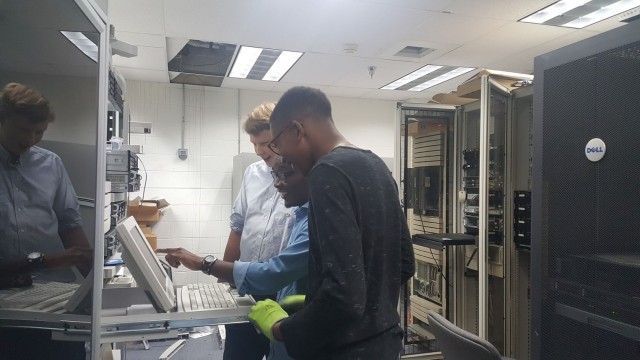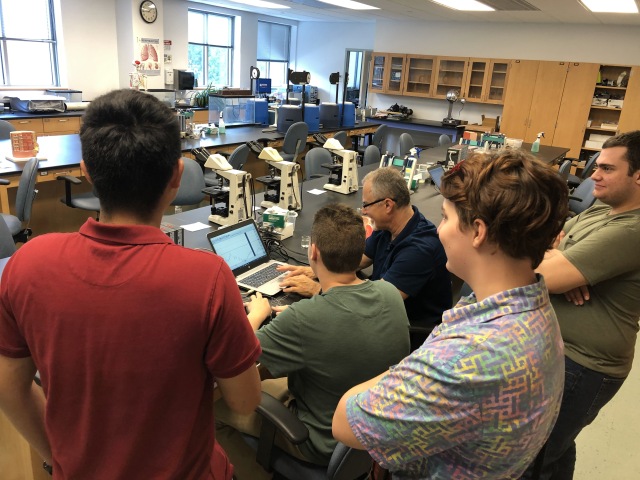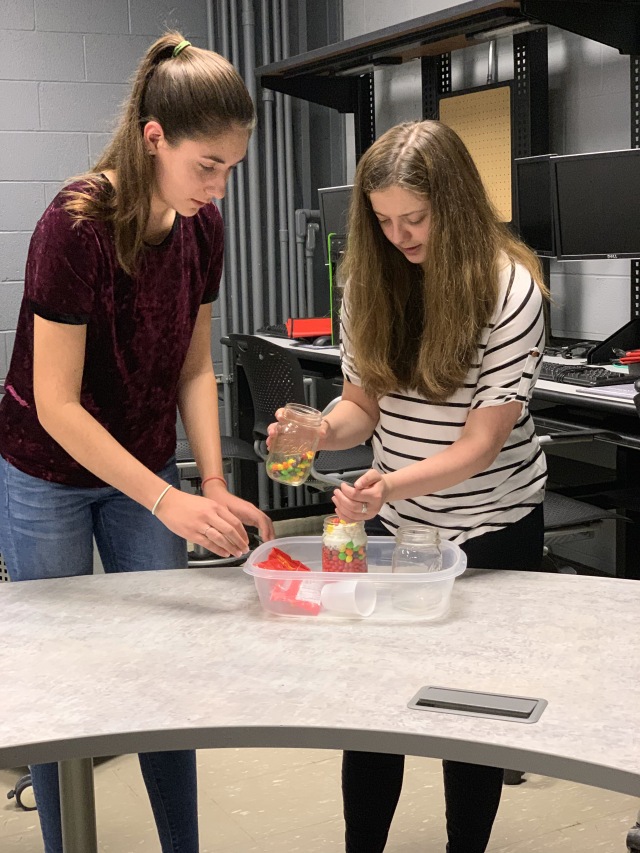Submitted By: Mikayla B.
Hello, my name is Mikayla and I would like to tell you about my participation in the Youth Conservationist Program. I found out about this program last year while I was attending the Maryland Sheep and Wool Festival in May at the Howard County Fairgrounds. To be part of this I had to fill out the application and write an essay. My application was accepted and I was chosen to receive my first choice breed of sheep. I received a Heritage Shetland sheep from a sheep breeder, Ms Linda, that donated the ewe to this program. She chose me based on the essay I wrote. I corresponded by email and phone with Ms Linda multiple times and we talked about what all I would be doing with my new sheep. We discussed sheep husbandry, the ewe’s personality and my hopes for the future as a new sheep owner.

My next step was to prepare my barn with a dry lot to house my new sheep in quarantine upon her arrival. I needed to ensure the safety of my goats and sheep at home while bringing home a new sheep. Finally the day arrived for my mom and I to go to the Sheep and Wool festival to meet the sheep donor and take home my new sheep. I found out her name was Amelia and she was so cute. Amelia and I bonded very quickly while at the festival, with the help of some peanuts and snuggles. I got to see all of the other sheep and the other kids that had also been chosen to receive a sheep through the Youth Conservationist Program. I had a wonderful day exploring the Sheep and Wool festival, talking with sheep breeders, getting to know my wonderful ewe Amelia and meeting many new people and sheep breeds. After our Youth Conservationist Program’s event displaying our sheep in the show ring, it was time to take our sheep home. We decided to place Amelia in the quarantine area with our Katahdin sheep Darby, so she would not be lonely. After a month passed, a clear health visit by the veterinarian and clear fecal test, we acclimated Amelia and Darby in with our other animals. The goats and sheep all became friends very quickly which was wonderful to see.
My experience participating in the Youth Conservationist Program has been amazing. I have met so many wonderful people, learned so many new things and have fallen in love with the Heritage Shetland Sheep breed.
Part II –
Now it was time to prepare for Fair season, so I kept busy learning all I could on how to show wool sheep. We had a sheep judge, Ms Sara, come to the farm and meet Amelia and teach me how to walk her. I learned how to walk her with just my hands and with a lead. I also learned how to care for her fleece and prepare her fleece for showing. During the summer of 2019, I showed Amelia at the Baltimore County Fair and the Hereford Jr. Farm Fair. She and I won many ribbons and learned so much while having fun.

We sheared Amelia with the help of one of our friends at the end of fair season. I then spent weeks picking out vegetable matter and then washing the wool. I took the clean wool to Ms. Linda’s house and she taught me how to finish processing the wool and spin it into yarn. We had a long information filled day on how to card or comb it, pick it and spin it! I learned so much from it and hope to make many neat projects. I am currently still spinning Amelia’s wool fiber into yarn and will crochet the finished yarn into something beautiful.
I did make a wool felted replica of Amelia as a gift to the donor of my ewe, which was very fun to make and looked just like her.

Once fall arrived, it was time for me to bring Amelia to a breeders house to breed with their ram. I researched many different farms with rams available and chose my favorite one to use for breeding this year. I chose an established ram with a great personality, good genetics and beautiful fleece owned by Ms Donna and Mr Jeff. If all goes well, we will have lambs in April 2020, just in time for the Sheep and Wool Festival.
My experience participating in the Youth Conservationist Program has been amazing. I have met so many wonderful people, learned so many new things and have fallen in love with the Heritage Shetland Sheep breed. I am excited to be a part in helping conserve this beautiful Heritage breed of sheep and to be mentored by some of the greatest people. If you also would like to participate in this program, please contact Elaine Ashcraft at tankewe_cr58@yahoo.com 46118 CR 58, Coshocton, Ohio 43812. Elaine can help answer all your questions. For detailed description about the YCP program, you may look up the information at http://www.sheepandwool.org/festival/youth-conservationist-program/ I am very thankful for all those that made this experience possible for me this year. My parents, Ms. Linda, Ms. Elaine A, Ms. Donna and Mr. Jeff, and Ms. Sara all were wonderfully supportive and guided me through my new sheep journey. I am looking forward to continuing to learn all I can about sheep and their wool and hopefully in the future I can give back to the Youth Conservationist Program as a mentor or a donor.






You must be logged in to post a comment.